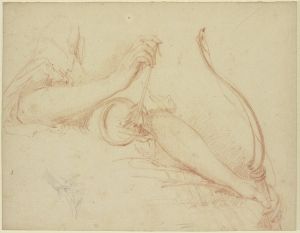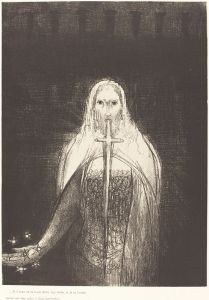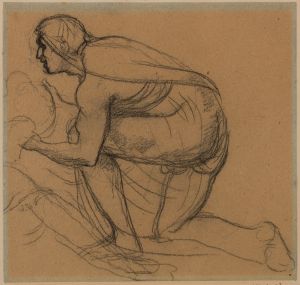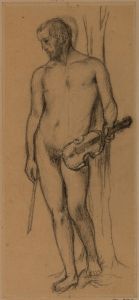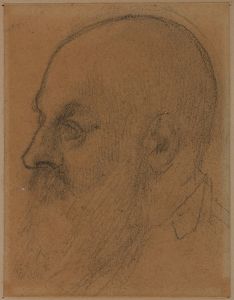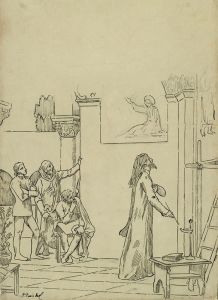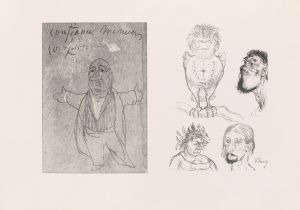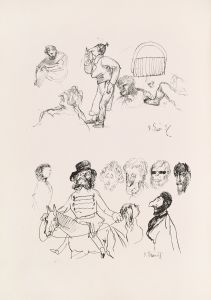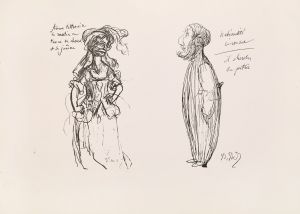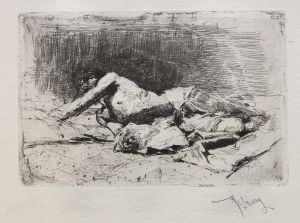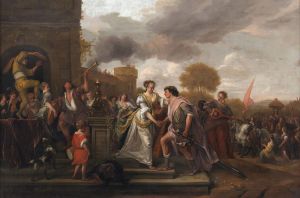
Homme nu debout, tenant un sabre dans la main droite
A hand-painted replica of Pierre Puvis de Chavannes’s masterpiece Homme nu debout, tenant un sabre dans la main droite, meticulously crafted by professional artists to capture the true essence of the original. Each piece is created with museum-quality canvas and rare mineral pigments, carefully painted by experienced artists with delicate brushstrokes and rich, layered colors to perfectly recreate the texture of the original artwork. Unlike machine-printed reproductions, this hand-painted version brings the painting to life, infused with the artist’s emotions and skill in every stroke. Whether for personal collection or home decoration, it instantly elevates the artistic atmosphere of any space.
Pierre Puvis de Chavannes, a prominent 19th-century French painter, is known for his distinctive style that bridges the academic tradition and the emerging modernist movements. Among his works, Homme nu debout, tenant un sabre dans la main droite (translated as Standing Nude Man Holding a Saber in His Right Hand) is a lesser-known but intriguing piece that reflects his interest in the human form and allegorical themes.
This artwork depicts a male figure standing nude, holding a saber in his right hand. The composition emphasizes the human anatomy, showcasing Puvis de Chavannes' skill in rendering the musculature and proportions of the body. The figure's stance is both poised and dynamic, suggesting a sense of readiness or contemplation. The saber, a prominent element in the painting, may imply themes of strength, defense, or conflict, though the exact context or narrative of the piece is not explicitly documented.
Puvis de Chavannes often drew inspiration from classical art and mythology, and his works frequently incorporate symbolic or allegorical elements. While this particular painting does not have extensive historical records or commentary, it aligns with his broader artistic focus on timeless, universal themes. His approach to the human figure often avoided excessive detail or realism, instead favoring a more idealized and harmonious representation, which is evident in this work.
The painting is believed to have been created as part of Puvis de Chavannes' studies or preparatory works, as he often produced sketches and smaller compositions to refine his ideas for larger murals or projects. However, there is limited information available regarding its exact date of creation, intended purpose, or current location. It is not among his most widely exhibited or studied pieces, which may account for the scarcity of detailed analysis or documentation.
Puvis de Chavannes' legacy lies in his ability to synthesize classical influences with a modern sensibility, paving the way for later artists such as the Symbolists and Post-Impressionists. While Homme nu debout, tenant un sabre dans la main droite may not be as celebrated as his monumental murals, it remains a testament to his mastery of form and his exploration of evocative, enigmatic imagery.
Due to the limited availability of specific information about this painting, further research into archives, exhibition records, or catalogues raisonnés may provide additional insights into its significance within Puvis de Chavannes' oeuvre.





